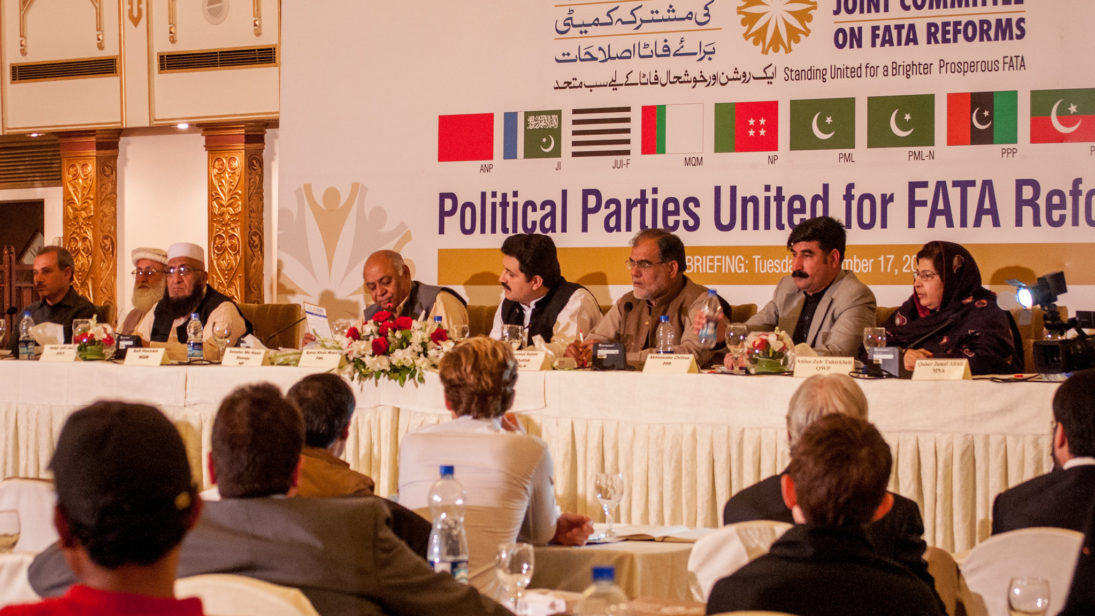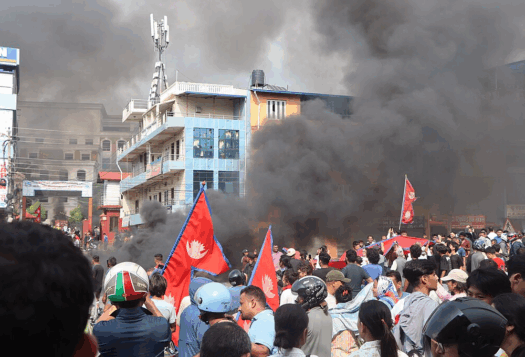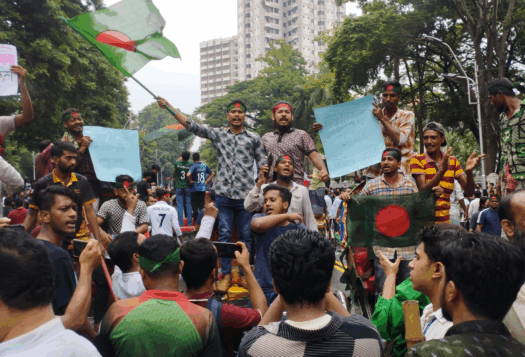
In May 2018, the Pakistani government passed a historic constitutional amendment that ended the semi-autonomous rule of its Federally Administered Tribal Areas (FATA), abolished the colonial-era laws that governed it, and merged it with the country’s territory. The merger was widely heralded as a way of ushering development into the impoverished tribal region and bringing peace and stability to its militant and conflict-laden history.
A deeper look into the past year’s tribal area developments reflects the new challenges arising from how the merger was carried out. The people of FATA—who expected the merger to bring in developmental projects, a proper legal system, and socioeconomic opportunities—are instead having to deal with slow and unsteady development, delayed justice and further alienation, all of which could lead to further violence and instability in the region. If the state continues to operate at the current stagnant pace, it could push the growing Pashtun Spring down the road of anti-state movement, and possibly an outcry for separation.
Undoing Century-Old Laws
If the state continues to operate at the current stagnant pace, it could push the growing Pashtun Spring down the road of anti-state movement, and possibly an outcry for separation.
To understand why it is such a mammoth issue to mainstream FATA, it is important to understand its history. For decades, FATA was administered under the Frontier Crimes Regulations (FCR) passed by the British and later adopted by Pakistan after independence. Under the FCR, the jurisdiction of the Supreme Court did not apply there. Instead, the FCR enforced unjust clauses such as arresting an entire tribe for the crime of one person and denying the right of appeal and legal representation. Pakistan may have retained these laws to gain the loyalty of tribal elders (maliks) and local bureaucrats (political agents) in return for granting them power through the FCR.
Nevertheless, the spillovers from Afghanistan’s wars brought FATA under international scrutiny, with U.S. President Barack Obama dubbing it “the most dangerous place in the world”. The rise of terrorist attacks within Pakistan resulted in FATA reforms becoming a priority under the National (Counter-Terrorism) Action Plan. The military launched Operation Zarb-e-Azb the same year to clear FATA and other areas from insurgents and terrorists, while the government formed an exploratory Committee on FATA Reforms in 2015, which recommended merging FATA with Khyber Pakhtunkhwa over the course of five years.
Challenges of Mainstreaming FATA
A major issue with the merger is of haste: it occurred five years earlier than the official Committee on FATA Reforms recommended. This premature move — unanimously passed within the span of a few days across various parts of the government — happened before the creation of administrative institutions to support new laws. Consequently, the tribal areas entered a legal vacuum where those hopeful for attaining justice through the new system found themselves in limbo. In the months following the merger, hardly any court or police institutions were set up, with a range of judicial cases left in the lurch. This suggests a critical lack of legal capacity and planning at the highest levels of government. Recently, civil courts were established in areas neighboring tribal districts to deal with cases from FATA, but the region itself has yet to see properly functioning courts.
The implementation of judicial courts has invited some backlash from some vocal residents of the tribal districts. One of the main points of contention is that judicial courts will undermine the authority of jirgas (tribal councils). Conflicts among Pashtuns are often resolved through jirgas, traditional assemblies of tribal leaders that use consensus to make decisions on anything ranging from land disputes and domestic affairs to serious crimes. They have been a pivotal source of justice in FATA for centuries and have become established local institutions, despite their disenfranchisement of women. The threat to jirgas poses a two-fold problem: the cultural and traditional affront to the people of FATA, and the difficult task of convincing residents that the state’s ailing justice system would better suit their judicial needs. “The speedy justice [jirga] is being removed and instead we are being pushed into those courts where cases have been pending for the past 70-80 years,” Hameed Ullah Jan Afridi, a prominent Pashtun politician and former Member of the National Assembly, told the authors. The jirgas provide cheap and speedy justice, as they make decisions within days and are accessible to the poor without significant costs, although there have been increasing reports of financial compensation from the disputing parties to jirga members. Local apprehension in giving up the jirga system speaks to the larger cultural reaction that has arisen from the merger.
Another significant challenge to implementing reforms comes from within the tribal community. Many tribal elders oppose the merger because it threatens the status quo that benefited them through unquestioned power. This opposition from the local status quo can only be countered over time through tangible post-merger development from the state. Without progress, ordinary residents and tribal elders alike are likely to remain unconvinced of the merger’s effectiveness.

Rising Frustrations
With the rising Pashtun Tahafuz Movement (PTM) demanding an end to alleged extrajudicial acts by the Pakistani military, these post-merger issues come at an uncertain time. Recent clashes between Pashtun activists and the army, leading to the arrest of Pashtun legislators, have already angered the residents of the tribal districts. Additionally, the slow pace of reforms has not helped alleviate these frustrations.
Besides the demands of PTM, calls for a separate province from some vocal residents of FATA have not subsided post-merger. Earlier this month, locals filed a constitutional petition challenging the merger. Hameed Ullah Jan Afridi has also started a consortium of anti-merger individuals and groups, petitioning to make former FATA a separate province. “I can foresee that these tribal areas will stand up for their rights at some point and it will create an outbreak, because they are in pain, they have problems, and they will retaliate at some stage,” he told the authors.
As polarizing as PTM is, their demands for justice and accountability cannot be ignored. As long as post-merger development remains in limbo and justice is delayed, movements like these will continue to pose a threat to the Pakistani military’s authority and approval ratings. This tension has already resulted in violence, and is only likely to escalate if things continue the way they are. The popularity of PTM and the ongoing issues with the merger raise fears of a separatist movement. And while secession of the tribal areas from Pakistan seems far-fetched, the movement itself will add a new layer to similar demands that the state has been curbing in Balochistan for decades.
The Way Forward
Considering that making progress in FATA is such an arduous task that could take years, perhaps a way to quell the rising frustration would be to manage the expectations of the ordinary residents of FATA. The merger was overwhelmingly presented as the only solution to FATA’s problems, with most political leaders, from now-Prime Minister Imran Khan to former KPK Chief Minister Pervez Khattak hailing it as a “huge victory for Pakistan”. Now that the moment of jubilation is over, however, the ground realities are dampening the high hopes of FATA’s people.
Considering that making progress in FATA is such an arduous task that could take years, perhaps a way to quell the rising frustration would be to manage the expectations of the ordinary residents of FATA. The merger was overwhelmingly presented as the only solution to FATA’s problems…Now that the moment of jubilation is over, however, the ground realities are dampening the high hopes of FATA’s people.
Over the past few months, the government has taken several steps towards development of the region, including the announcement of local body elections, the training of law enforcement agencies, and the appointment of judges for tribal districts. While these steps are commendable, they have yet to materialize in the eyes of FATA’s residents. The hasty execution of the merger has created a divide between expectations and reality. The silence of the prime minister over the recent arrest of two legislators from tribal areas—who are both associated with PTM—and the official delay announced in tribal district elections has further widened the rift between the locals and the government.
The only way forward is to swiftly set up administrative and political infrastructure, such as functioning law enforcement agencies and courts, to provide basic rights and access to justice for local residents. At the same time, taking into account the cultural and historic attachment to jirgas in the community, it would not be possible to repeal the jirga system completely. As suggested by the official committee on FATA reforms, jirgas could serve as a “jury system” for civil and criminal cases.
However, such measures require sourcing finances, which has been another major hurdle since the merger was announced. The government had promised a special award of three percent of the federal revenue for the newly merged tribal districts. One year later, there is still a struggle to secure such funding from an already fragile economy. At a finance meeting in April 2019, the government requested other provinces to share funds to uplift tribal districts, but no agreement could be reached. In June 2019, a budget of over USD $1 billion was finally approved for the development of merged areas, but whether these funds will be released without delay remains to be seen.
The merger may have given a glimmer of hope to much of FATA, but the fact remains that until groundwork is done to make up for decades of underdevelopment and isolation, the lives of the tribal people will remain in limbo and their frustrations will continue breeding, potentially fueling the Pashtun Spring, which has gained new momentum through FATA’s young activists.
This project was produced through a journalism fellowship by the South Asian Journalists Association (SAJA).
***
Click here to read this article in Urdu.
Image 1: FATA Committee via Flickr
Image 2: Asif Hassan via Getty Images


